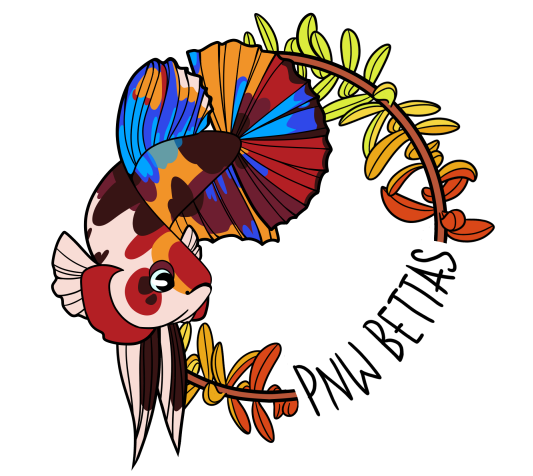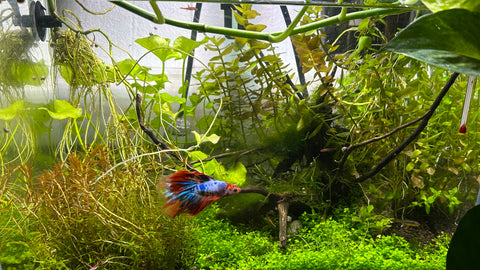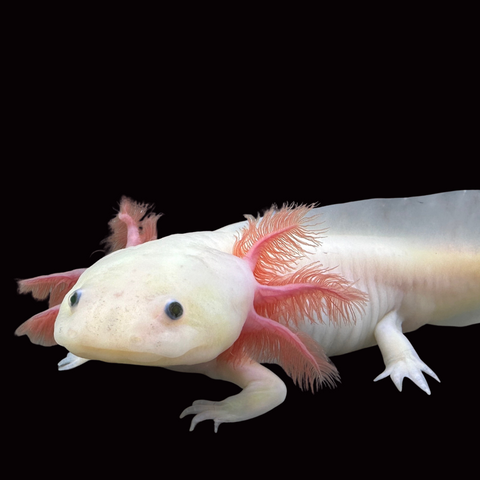Betta fish are some of the most mistreated fish in the aquarium hobby, follow this basic care guide to give your betta a happy healthy life!
Tank
When it comes to choosing a tank for your betta, you want to have at least 5 gallons. This will give enough room for your betta to swim and explore and will allow you to maintain proper water conditions. If it is your first tank, I would recommend choosing a larger tank, such as 10 gallons. Larger tanks are generally easier to maintain and have more room for error. You also want to be sure you have a tank lid. They not only prevent evaporation, but betta are jumpers and can jump out of the tank. Bettas should not be kept together in the same tank. A divided tank can be done if the dividers are secure and opaque such as the Life With Pets betta tank dividers.
Heater/Tank Temperature
Bettas are tropical fish, and therefore require a heater in their tanks. Betta thrive at temps from 78-82 degrees F. A 50 watt adjustable heater is a great choice for your 5-10 gallon tank.
Filtration
Betta require a filter in their tanks just like any other tropical fish! Betta fish need a tank with low flow. Sponge filters are a great option since they inherently have very low flow. Sponge filters are harder to find at chain pet stores, but a hang on the back filter can also be used. You can also make a DIY baffle to lower the flow on any hang on the back filter.
Substrate and Décor
You have lots of choices when it comes to substrate and décor for your betta tank! It's time to make the tank your own. Any sort of sand, gravel, or planted tank soil is a great substrate option. When it comes to décor, choose non-sharp aquarium safe items. For plants, choose fake silk plants or real plants for your betta. Some plastic plants may harm your bettas fins, so silk or real plants are safer options. Make sure to provide lots of cover and hides to make your betta feel safe in their home!
Diet
Betta fish are obligate carnivores, so they require a diet with lots of protein. Pellets or flakes with at least 40% protein content are best. Variety will also benefit your betta. Frozen brine shrimp and bloodworms are great foods to add great variation to their diet! Live foods such as daphnia, blackworms and flightless fruit flies are other great options.
Tank Mates
Bettas should not be kept in the same tank. They are aggressive and can hurt or kill one another. Female betta can sometimes be kept together in something called a “sorority tank”. Note: this is an EXPERT ONLY tank with very specific setup needs and is recommended only for very experienced betta keepers.
Some betta can tolerate tank mates. When housing bettas with other fish, choose a tank 10 gallons or larger. The success with tank mates is dependent on the individual betta and their personality, therefore having a backup tank and knowing signs of aggression to look for are recommended. When choosing fish, choose non-aggressive fish that are not fin-nippers. Also be sure they are temperature/parameter compatible, and they are able to live comfortably in the chosen tank size.
Tank Maintenance
Once you have your betta tank set up, you will need to do regular maintenance to keep the tank healthy for your fish. Water changes of 10-50% (depending on tank size, stocking, planted) weekly are recommended.
Tank Cycling – The Nitrogen Cycle
Making sure your tank is cycled is essential for the health of your fish. Here are some resources to learn more about the nitrogen cycle and how to cycle a fish tank!



Comments (0)
There are no comments for this article. Be the first one to leave a message!